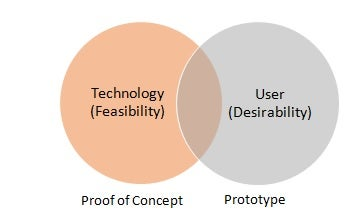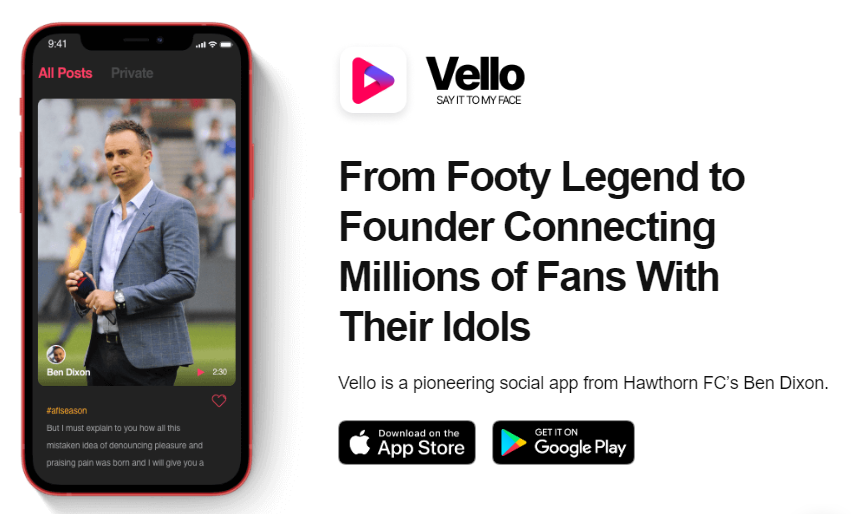Prototype vs Proof of Concept: What is the Best Way to Test Your App Idea?
So you have a fantastic app idea.
You’re over the moon and confident that it could revolutionize your industry.
The big question is HOW do you best bring it to life?
All developers who have created successful apps know that it takes more than just a good idea to make it big.
You have to first test if that idea is feasible and marketable. Otherwise, you run the risk of losing a fortune.
The good news is there are ways to test the feasibility and viability of your vision even with limited initial investment: building a prototype or a proof of concept.
In this blog post, I’ll discuss each approach’s definition, key features, uses, and benefits so you can decide which method best suits your goals.
Let’s get started!
What is a proof of concept?
A proof of concept (POC) involves methods to obtain evidence that a project, system, or idea will work. It is used to test and demonstrate how something abstract can turn into a reality. Depending on what’s being validated, a POC can be anything from documentation to a simulated user flow.
Benefits of using a proof concept
A web or mobile app POC is often used internally to help product teams and organizations in:
- Evaluating technical feasibility. A proof of concept gives app publishers the confidence that potential technologies can meet all specific requirements before investing resources into the full-scale app development process.
- Proving your idea works in practice. A POC is useful for validating the effectiveness of an idea or solution with stakeholders. It gives decision-makers insight into the expected performance and value of the final product.
- Acquiring seed funding. If your POC is able to meet the two prior points, it can be a powerful tool for gaining initial funding. Think of yourself as a TV producer of a yet-to-pilot show. To convince advertisers to buy spots on your program, you use data you obtained from an audience survey as POC.
Characteristics of a strong proof of concept
As its name implies, a proof of concept must prove the feasibility of an idea. Therefore, it should:
- Offer rich data. The most successful proofs of concept are rigorous enough to provide rich data points for understanding complex systems.
- Be well-researched. A strong POC must be evidenced based. It comprises technical and market research, personal testimonies, and feasibility studies.
- Demonstrate solutions. While it’s not meant to be tested by users, your web or mobile app POC must clearly explain to potential investors how it solves a problem or meets the needs of your target audience.
Is a proof of concept the same as a prototype?

Source: Entrepreneur
A POC and a prototype share numerous similarities in terms of functions and benefits. The most obvious is that both are used in the pre-development stage to validate key business concepts.
However, they are two vastly different approaches.
For one, the ideas they aim to validate differ. POC tests whether things can be done from a technical standpoint, whereas prototypes involve testing the actual built product to gauge user desirability.
A proof of concept theoretically demonstrates the technical feasibility of an idea, often through a written document or a presentation. In other words, it is an effort to test certain assumptions or explore the potential of a particular idea, even without a need to produce an actual product.
Meanwhile, a prototype is a physical representation of an idea or product. It involves tangible outputs that may come in different forms, such as a sketch, an app design, engineering models, and even a functioning app.
Here’s a quick guide for your reference:
| Proof of Concept | Prototype | |
|---|---|---|
| Output | Can be abstract (documentation or presentation) | Produce different levels of physical products (e.g. sketch, model, interactive app design) |
| Primary goal | Test if an idea can be made real | Test if an actual product or feature is desirable to users |
| Primary benefit | Avoid wasting time and resources on something that can’t be done | Identify potential flaws in design and workflows to avoid wasting time and resources during development |
| Audience | Stakeholders, investors | Investors, target users |
To help you further set the two concepts apart, let’s further explore what a prototype is, what it looks like, and what it can offer your new venture.
What is a prototype?
A prototype is an early version or initial mock-up of a product, system, or process meant to illustrate how the final version would look and function. It’s usually used for user testing though it can also be presented to stakeholders and potential investors for funding.
Benefits of building a prototype
In web or mobile app development, a prototype is useful in:
- Determining product-market fit. Creating a prototype allows you to determine if there is a market demand for your product idea.
- Gathering initial feedback. Through prototyping, your app development team can identify users’ pain points in interacting with your product, allowing you to make data-driven improvements.
- Minimizing development costs. As you may already know, the more complex the app, the higher its development costs. A prototype helps you choose the best UI design for your app without investing significantly in unnecessary or faulty features.
- Obtaining funding. An interactive prototype with a world-class design can help you attract investors. Think of yourself as a filmmaker. To convince producers to invest in your yet-to-be-shot movie, you present something tangible, like a screenplay excerpt.
In our experience, tech investors are often sold on a product they can actually click, tap, and swipe.
We’ve seen this happen for numerous clients who’ve raised millions in investment using only a prototype design. One of which is Vello.

By building an interactive prototype design of the highest quality, we’ve helped a football legend raise $1 million in investments and realize his grand goal — giving fans a platform to connect with their idols.
Check out the relevant case study to learn about our part in Vello’s ultimate success.
Characteristics of an effective prototype
In our experience, here’s what an effective prototype looks like:
- Minimal features. A successful prototype should have only the features that address the market’s needs. Going beyond the core functionality you envision often results in a longer and more costly process, defeating the purpose of prototyping.
- Functionally accurate. While a prototype is not necessarily a complete product, it must represent your full app accurately. It should demonstrate the problems it solves in realistic scenarios.
- Scalable. Software development is an iterative process. An effective web, iOS, or Android app prototype must leave room for fast improvements based on user feedback.
- Visually appealing and user-friendly. A successful web or mobile app prototype must give end users an idea of the kind of experience the app offers. Therefore, it should be both engaging and easy to navigate.
Take it from our partners, Good Empire and Wine Valet, who’ve raised millions of dollars through crowdfunding — using interactive and beautifully designed prototypes.
When to use a proof of concept or a prototype?
Now that you know the key distinctions between the two approaches, how do you decide which one should you use? To answer that, you need to go back to your objectives.
Use a proof of concept if:
✏️You want to gather data and discover facts related to abstract theories.
✏️You want to know if your custom app idea is technically feasible.
✏️You want to demonstrate the feasibility of an app idea or a complex business concept to potential seed investors.
Use a prototype if:
🧰You want to test if the solution your product is offering is desirable to users.
🧰You want to explore your app’s look, feel, and usability before coding.
🧰 You want to simulate user experience and interaction to create the best app version possible.
Start small, go big
Every app that has found success had to start somewhere, and for most apps, that somewhere is either a proof of concept or a prototype.
Launching something large and complicated from the get-go can often derail the entire process.
By testing out a small version and leveraging user intelligence, you can your app the best chance of success.
If you need a full-journey app development partner to guide you from ideation to completion, contact Appetiser today!

Jane Eslabra has 14+ years of experience producing content across traditional and digital platforms. She channels her strong passion for fostering tech startup growth through knowledge sharing.


